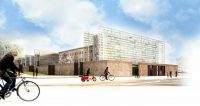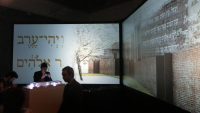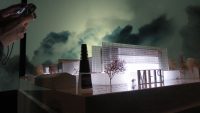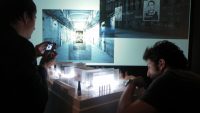MEIS’s project has presented us with a place or landscape that is understood in the broadest sense of the terms as both complex and heterogeneous. It is a museum, but also a place of memory, part of the city, of the collective consciousness: a historical monument. The walling, typical of an ex prison, must turn into an element from which to re-generate the relationship with the city: transforming closure into opening and distance into proximity. The Museum of Italian Judaism will be a museum of the city, a museum for the city, an open space: some areas will be freely accessible, such as the entrance lobby, bookshop, restaurants, part of the temporary exhibition area and the garden. Volumetrically, the five elements coming in sequence one after another symbolically recall the five books of the Torah, the Pentateuch, becoming at the same time elements that contain and are contained. Prominent passages from the Torah, to be chosen with the Jewish community, will be written in bas-relief on the wall of the museum. The areas dedicated to exhibiting works of art have been conceived as neutral spaces so as not to interfere with elements on show: there will be a series of movable backdrops that can be placed in multiple configurations to generate varied possibilities of use for the space. All areas will be lit with indirect and diffuse zenithal lighting: by means of vertical apertures at the sides of the exhibition rooms, the city will enter and become a part of the construction of the internal space in a significant manner.
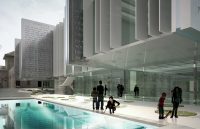
Meis
New museum dedicated to Italian Jewish History
—
Ferrara
2011 in progress
2011 in progress
work in progress
exhibitions
Meis
New museum dedicated to Italian Jewish History
—
Ferrara
2011 in progress
2011 in progress
architecture
SCAPE - Ludovica Di Falco with Alessandro Cambi
Structural and plant eningeering
Studio Arco, Thyke Europa s.r.l.
Museum exhibition
Luca scarzella/Vertov
with
G.Carluccio, E.Gabbioneta, O.Quarenghi
multimedia project and video
Luca Scarzella
set design
Gianni Carluccio,
Elisabetta Gabbioneta
graphic project
Alizarina
Landscape design
Antonio Stignani
client
MIBACT, City of Ferrara, MEIS Foundation
2011 in progress, Ferrara

